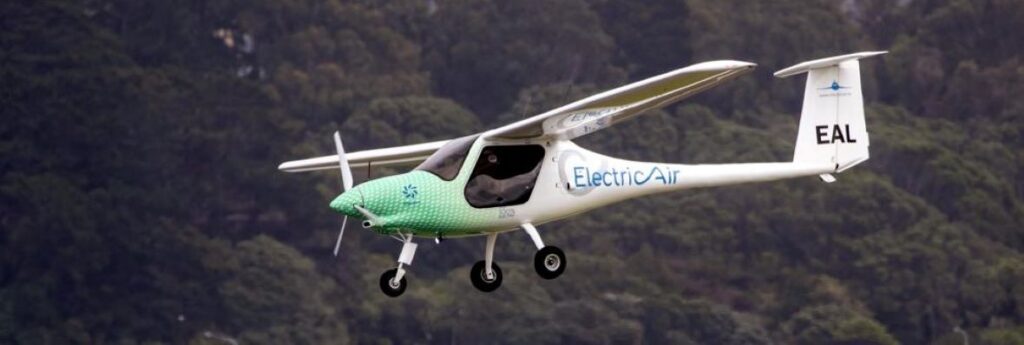Aiming to draw attention to the possibilities of greener flying and timed to coincide with the opening of the pivotal UN climate summit in Glasgow, Scotland, a New Zealand man made history by becoming the first person to fly across New Zealand’s Cook Strait in an electric plane – believed to be the longest distance flown in an electric plane across any body of water.
Gary Freedman thought it only fitting that the first thing he saw when approaching the Wellington coastline was the rotating blade of a wind turbine producing renewable energy when he completed the flight in the small two-seater plane on Monday – a 40-minute journey that came 101 years after the first person flew a conventional aircraft over the body of water that separates the South Pacific nation’s two main islands.
“It’s a very exciting day for the airport. A world-record-setting day,” said Wellington International Airport spokesperson Jenna Raeburn.
Freedman said the day began badly with pouring rain at his departure point near the town of Blenheim. After delaying the flight for 15 minutes, the weather cleared just enough for takeoff and soon improved to sunny conditions over the ocean.
Freedman said he was ecstatic when he landed, and the technology worked better than he’d hoped. “We still had 40% left in the battery,” he said. “We could have almost flown back again.”
Freedman, 49, who founded the company ElectricAir, said he’s long been passionate about the environment and the idea came as he thought about the incongruity of driving an electric car and flying a gas-powered plane.
He took a trip to Slovenia to buy a Pipistrel Alpha Electro plane, and then jumped through various hoops with New Zealand aviation regulators to get the plane cleared.
It weighs less than 400 kilograms and is much quieter than a traditional aircraft. For the 78-km trip, Freedman flew it at just 305 metre above sea level and at the relatively slow speed of 130 kph in order to preserve its charge.
Freedman said it takes about one hour to fully charge the plane. The maximum flight time is also about an hour, and he mainly uses it for pilot training.
Wellington International Airport is preparing for regular short-hop flights of new 12-seater electric planes that will begin in about five years’ time, said Raeburn, the airport spokeswoman.
She said electric technology is not yet advanced enough to power large passenger planes, but biofuels and hydrogen will likely provide greener alternatives in the future.

